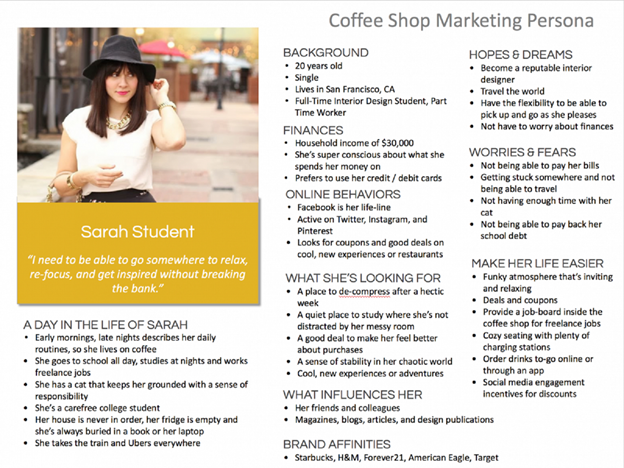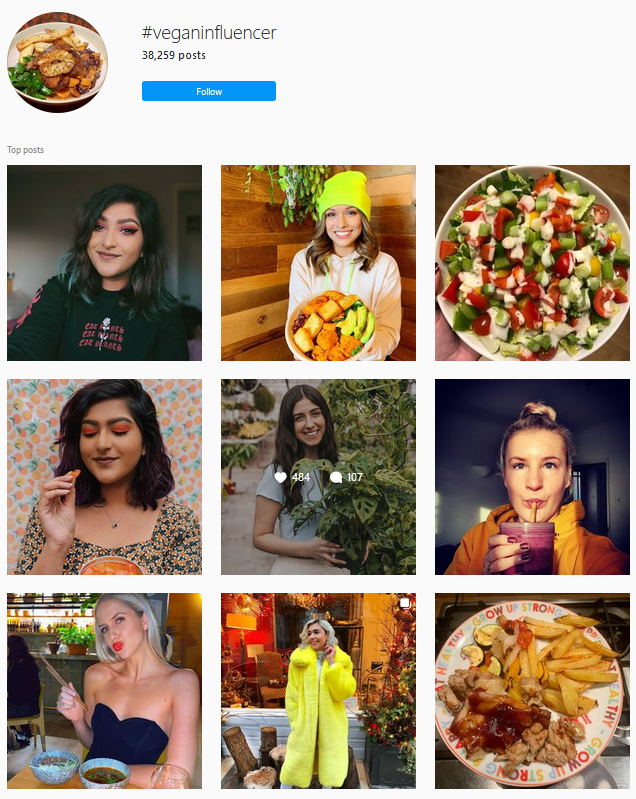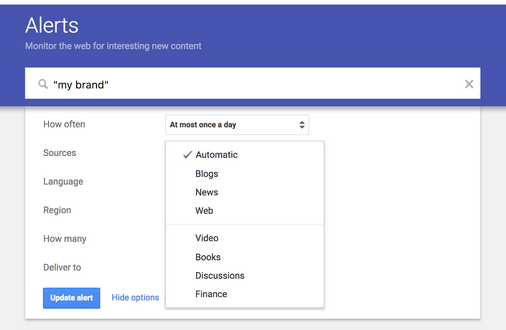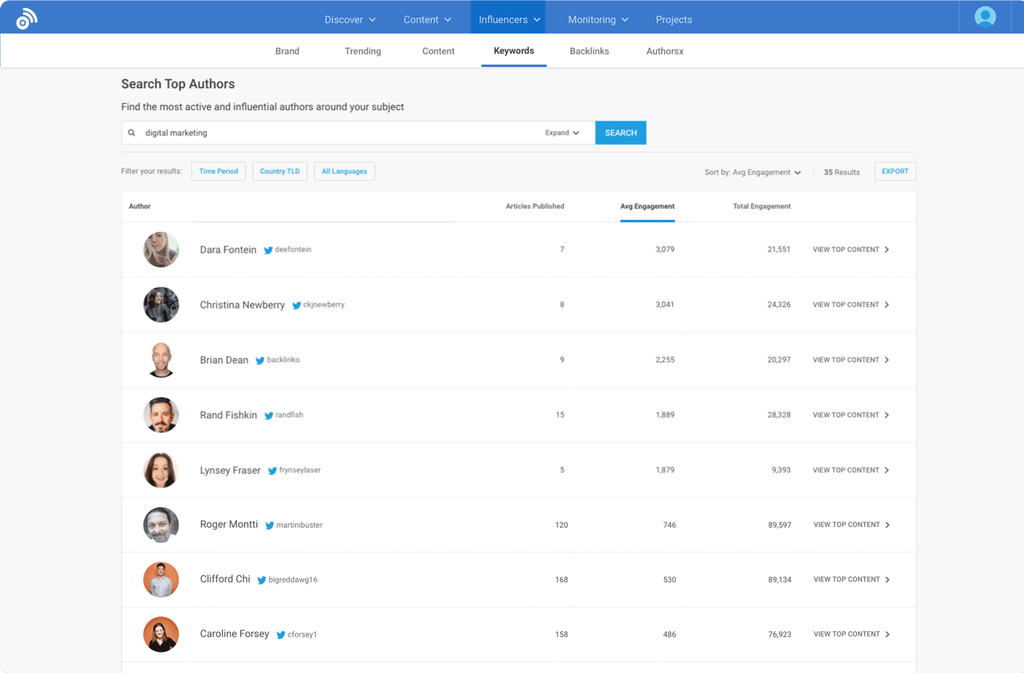Influencer marketing is a great strategy. Influencers are people with authority in their niche and a significant following on social media. This means that when they talk about your brand, many will listen. For you, that simply means more potential customers.
But an influencer marketing strategy can only be that successful if you choose the right influencer to work with. To choose the right person, you need to know what you need and learn how to find that person.
In this article, let’s look at how you can find the ideal influencer. But first, let’s look at why influencer marketing is right for your brand.
In this article
Why Use Influencer Marketing?
Influencer marketing works because it is based on two things: word of mouth and social proof. Word of mouth marketing is one of the five key growth strategies used by successful brands. According to Review42, word-of-mouth marketing brings in five times more sales than paid media. That’s not surprising, given that 74% of consumers identify word of mouth as a key factor in their purchasing decisions, according to BigCommerce.
When other people say they like a product, a consumer is likely to purchase it. Social proof is a psychological principle that sees people following what others are doing. So, when many people purchase a product, others will do the same.
In other words, with influencer marketing, you can get more people to trust you enough to give your products a try. And that means more revenue—and more potential for growth—for you.
Benefits of Influencer Marketing
You can benefit from influencer marketing in other ways, too. Let’s look at a few of them.
First, you can build your brand authority. Since followers trust influencers, their word carries a lot of weight. If an influencer says your brand is excellent, their fans will believe them. That means they’ll come to trust you as well.
With influencer marketing, you can also increase brand awareness. Unlike paid advertisements, which have a reach limit, influencer posts can have theoretically unlimited reach. That’s because influencer posts can be shared multiple times and can even go viral. Your brand message has the potential of reaching not just that influencer’s followers but millions of others. In other words, you can get more value for your advertising dollar.
Influencer marketing can also boost your search engine optimization (SEO) efforts. When an influencer links back to your website on a post and others share that post, you increase your online visibility. If authoritative sites can find you online, they can link to you. Google sees each backlink as a vote for the quality and credibility of your website. The result? It will rank you higher in search results.
How to Find the Best Influencers For Your Brand
Now that you know what influencer marketing can do, let’s discuss how you can find the best influencer for your needs. This section will talk about what you should look for in an influencer and where you can find them. Let’s get started!
Know Your Audience
You should know whom you want to target with your campaign. That’s because the type of audience you want to reach will determine your choice of influencer. The influencer you choose should have followers within the demographics you want to target (more on this later).
Determine whether you want to target the same audience as previous campaigns or branch out to other demographics in your influencer marketing. If your goal is to reach the same audience but increase conversions, you can use your existing buyer persona to determine whether an influencer is a good fit.
Here’s an example of a customer persona:

On the other hand, if you want to branch out and reach different demographics, you’ll need to create another customer persona and determine the characteristics you’re looking to target.
Let’s imagine you’re a luxury brand looking to target millennials this time instead of the baby boomers who have previously made up your core audience. Include the income range, values, fears, age, behavior, and goals of your ideal millennial buyer in your campaign-specific customer persona.
Once you’ve determined your target audience, it’s time to define the right influencer for you.
Define Who the Right Influencer Is
Don’t just pick the first influencer who has a large number of followers. Before you decide who to work with, you need to define the characteristics that the right influencer should have.
One of the most obvious factors is relevance. You have to make sure the influencer shares content that is relevant to your industry, and has an engaged audience of people who fit your customer persona.
When reviewing an account, remember that fraud accounts can inflate the number of followers. You can use Buzzweb to analyze how real the followers of an influencer are. If you decide to check manually, here are a few things you will find if influencers artificially inflate their followers:
- Irrelevant comments on influencer’s posts. Two-word comments such as “Great job” or “great post” may be bots.
- Abrupt follower growth. Influencers who grow their following naturally will only have a gradual increase in followers if you analyze their follower growth history. Significant peaks and drops may indicate the influencer buys followers, some of whom leave later.
- Deficient post engagement levels. The average engagement rate of the last 20 to 30 posts should be proportional to the number of followers. If engagement rates are low, the influencer might have fake followers or disinterested followers. Either way, it’s best to avoid these types of influencers.
Finally, choose whether you want to work with micro-influencers, who only have 5000 to 25,000 followers, or with nano-influencers, who have as few as 1000 followers. A bigger following doesn’t always mean better, because your message might resonate with an audience better if the chosen influencer has a more focused niche.
Make sure the influencer you choose also shares your brand’s values. For example, if you’re selling sports equipment, don’t choose an influencer who isn’t a known sports buff.
Your chosen influencer shouldn’t have too many sponsored posts, either. You don’t want people questioning whether what your chosen influencer says about your brand is accurate. Any sponsored content should align with their brand and values.
Set Your Budget
Determining your budget is the final step before you start reaching out to influencers. Setting your budget will also help narrow down your list of influencers to contact.
Influencers might ask for a one-time or monthly fee, depending on the campaign, platform, and demands on their time. Set a cap for the amount you’re willing to pay and work around that amount. If you’re dealing with an agency that manages influencers, you will also have to set aside a bit more for agency fees.
Looking for the Right Influencers
Now that you have a clear definition of what you’re looking for, it’s time to start looking. Here are some ways to find suitable influencers for your business:
Use Hashtags
Hashtags help organize content on social media. If you use the right hashtags, you can find the influencers you’re looking for, too. For example, on Instagram, you can use hashtags including the word #influencer to get a list. Here’s how you might do it if you were looking for an influencer in the vegan food niche:

Look through the most recent or most popular posts. From there, you can identify the content that resembles the content you wish to produce for your campaign. You should also be able to identify the influencers that have the kind of following you wish to attract based on what they post and the people who comment on their posts.
You can also search using hashtags that are related to your brand or your niche. If you’re selling sports equipment, for example, you can use the #sportsequipment to see what you can find. This path will take a bit longer because you’d have to sort through posts related to sports equipment from users who aren’t influencers and don’t have a large following. But if you go this route, you can quickly isolate the posts relevant to you and your campaign by topic.
Tools like Buzzsumo can help you discover relevant trending hashtags. I’ll talk a bit more about that when discussing social media monitoring tools.
Take Advantage of Social Media Monitoring Tools
You can use social media monitoring and listening tools to find influencers for your campaign. Social media monitoring and listening tools such as Hootsuite and Mention can help you see who is talking about you and your brand. These people could include influencers who are already posting about you because they love your brand or products.
With this method, you can easily find influencers who are already familiar with your brand. It’s easier to work with people with this kind of familiarity with your products as their content will be more authentic and appear more credible to their followers.
Leverage Google Alerts
Google Alerts can help you find influencers for your business, too. Just specify the keywords you would like to be alerted for. For example, if you’re selling sports equipment, the keyword “sports equipment” will do. When an influencer “sports equipment” in a post, Google will send you an alert.

You can even specify the alert frequency, the language of the content you’re looking for, and the places you’d like Google to look. Just input your email address so Google can send you the alerts there. The more specific your keywords, the better. Otherwise, be prepared to be flooded with alerts that have little or no relevance.
Use Platforms with Influencer Marketing Features
Influencer marketing platforms such as Grin and BuzzSumo are great for finding the right influencer for your campaign. BuzzSumo, for example, has a database of millions of influencer profiles you can check out.

The tool will give you each influencer’s page authority, domain authority, and number of followers, so you can compare and take your pick. You can even filter by the platform. You can also check out your competition and see which influencers they’re working with.
Reaching Out to Influencers
Now that you have a list of potential influencers, it’s time to reach out to them. Here are a few ways you can get in touch with influencers who could help you with your campaign.
Message Them on their Social Channels
The influencers you want to reach spend a lot of time on social media, so it’s only logical that you’ll try to send them private messages on the channels where they’re most active.
For example, if you see an influencer posting an Instagram story that speaks to you on a personal level, you may reply to them straight from the story. Take care not to send them something that came out of a template. Instead, send them a message that tells them why you love their content.
The aim of an initial outreach is to create a personal connection with the influencer. It’s best to keep things light for at least the first few messages until you feel confident enough that the influencer is open to discussing a collaboration with your brand. However, you need to use your business account so that there wouldn’t be any confusion later on.
Once you feel you’ve already built a solid relationship with the influencer, you can send them a pitch. However, you need to take steps to ensure that your pitch doesn’t sound spammy. In fact, you can just bring it up casually in the middle of the conversation. Some influencers may refer you to their representatives for discussion of this nature. Others, especially those who are just starting out, might be willing to discuss it directly with you.
Send An Outreach Email
Many influencers get hundreds of private messages a day and don’t have time to check them all. Others prefer to be reached through email for business inquiries and post their email addresses on their profiles and websites.
However, there are some others who don’t have their email addresses readily available. To make things easier for you, use a cloud-based tool that will help you find the email address of the person you’d like to reach. Some allow you to do bulk searches, which helps you create a list of influencers and their contact details rather quickly.
Once you have your list of email addresses, it’s time to send them your proposal. You must personalize your emails, so each influencer on your list will know you’re serious about a possible partnership. Include in your email the following:
- Who you are. Don’t just say what you’re selling. Explain what you stand for, too. Many influencers are conscious about the brands they represent and will hesitate to collaborate with you if they think your values don’t align with theirs.
- Your purpose for reaching out. There is no use beating around the bush. Tell them that you’d like to collaborate with them on an influencer marketing project, then specify what you’d like them to do and the possible timelines for each post.
- Your offer. Influencers create content for a living, so the least you can do is give them a fair offer that’s proportionate to the amount and type of content they’re expected to produce. You also need to be clear about the payment terms to avoid confusion.
- What they should do moving forward if they’re interested. You can ask them to send their rates or schedule a call with you for a further chat.
You may need to follow up several times. Use an email tracker to see when your emails are opened. If an influencer doesn’t reply after two or three follow-ups, assume the answer is no and strike them off your list.
Use an Influencer Relationship Marketing Tool
Many influencers use influencer relationship marketing (IRM) systems to help them connect with potential clients. Platforms such as AspireIQ, Famebit, and Upfluence, for example, have millions of influencers in their databases. You may use these platforms to seek out influencers based on their niche, follower count, and location. This saves you a lot of time that you could otherwise spend on creating actual content for your brand.
A good IRM will allow you to gain access to influencers’ analytics, including audience size, posting habits, and engagement rates. They also have built-in email and messaging solutions that will help you do influencer outreach without leaving the app. Finally, you can manage projects involving multiple influencers using built-in task and project management systems.
Once you’ve received quotes or expressions of interest from several influencers, take your final pick. Make sure you inform those you didn’t choose about your decision. You might want to work with them in another campaign, so it pays to be polite and courteous now.
Wrapping Up
Influencer marketing can help your brand achieve its goals. With influencer marketing, you can increase conversions, build brand authority, increase awareness, and even improve SEO.
But an influencer marketing campaign can only be successful with the right influencer for your brand. Choosing the right person to work with requires strategy and time. Now it’s over to you to invest the time and effort you need to find the right person. You’ll soon find that perfect influencer who represents your brand values and will help you reap those influencer marketing benefits.
Best of luck with your campaign!



